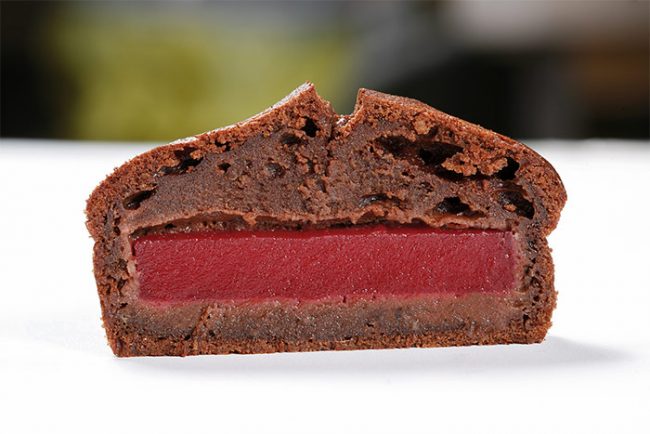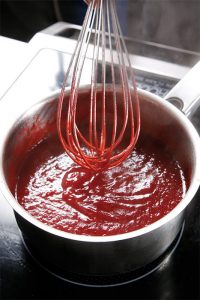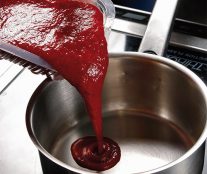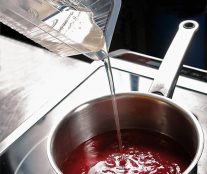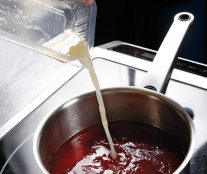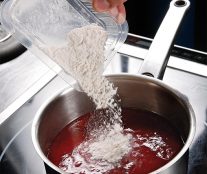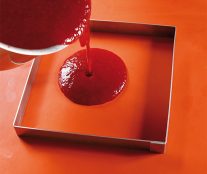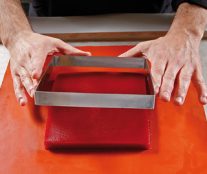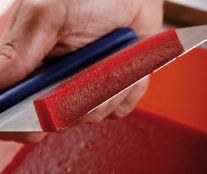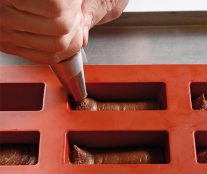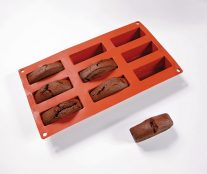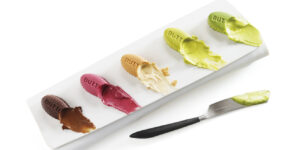Categories Pastry Chef Articles
Gellan gum applied to heat-resistant gelatins in bakery
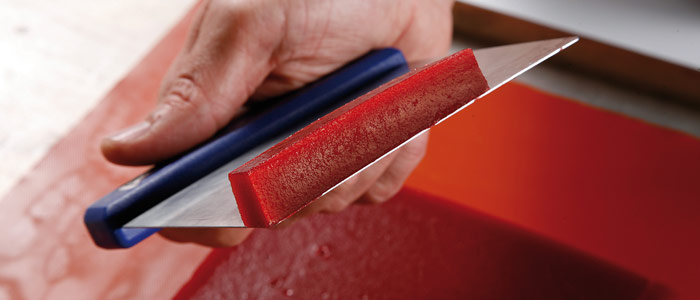
Jordi Puigvert has researched the technical possibilities of gelling agents, thickeners, emulsifiers, fillers, and others like nobody else with a very clear objective: to offer the bakery professional specific solutions to solve problems that arise on a day-to-day basis.
In his book, Evolution, he elaborates on the potential of gellan gum when it comes to obtaining heat-resistant gelatin, that is to say, one that allows its use and maintains its properties in cooking processes that can reach up to 80ºC, for example in the preparation of a baked cake.
Gellan gum
Gelling agent of vegetable origin, capable of withstanding temperatures of up to 80ºC. It is obtained from the fermentation caused by the sphingomonas elodea bacterium.
It has been profusely used in contemporary cuisine, but very little in pastry. In this book (Evolution), it will be used to prepare a filling with a texture similar to that of jellied compote, which is then introduced in a chocolate financier.
datasheet
- Origin:
- Polysaccharide of vegetable origin.
- General data / How it is obtained:
- It is obtained from the fermentation of glucose caused by the sphingomonas elodea bacterium. It is then isolated by precipitation in alcohol, dried and finally ground.
- Application:
- Add to a liquid and then heat up to 95ºC (or boiling point) to ensure its complete dissolution.
- Dosage:
- 10 to 20 g per liter depending on the thickness desired.
- Properties:
- It acts as a gelling, thickening and stabilizing agent. It withstands 80ºC direct heat.
- Remarks:
- It is not suitable for freezing. However, it admits the addition of fats in a larger amount than other gelling agents of non-animal origin.
Heat resistant gels
Gellan gum allows us to make gels highly resistant to the baking process. In the following recipe, the raspberry gel is the filling of a cake. After baked, the filling will acquire the texture of jellied compote.
Ideas for use
- It can be used as a filling for any baked product such as cupcakes, croissants and other. I recommend combining a raspberry bar with a chocolate one for pastries.
- The resulting gel can also be pureed and spread over a dough before being baked such as a schnecken, as it is totally stable in the oven.
Technical remarks
- If using a mixture with a rather liquid texture, the amount of gellan can be reduced to 8 g per kilo of liquid.
- The result before and after the baking process is totally different, as once the gel has solidified, its texture is quite hard; whereas after being baked, although it still holds a perfect shape, its texture is softer, similar to that of slightly jellied compote.
Heat-resistant raspberry gel
- 350 g raspberry purée
- 100 g stock syrup (50%)
- 50 g water
- 1,5 g sodium citrate
- 10 g gellan gum
- 25 g lemon juice
Combine all the ingredients as shown and heat to a boil. Stir continuously over a gentle heat for 1 minute.
Place a 1-cm high frame on a silicone mat and fill with the mixture. Leave to cool and, when thickened, cut into bars of a smaller size than the financier size we will use.
Chocolate financier filled with heat-resistant raspberry
